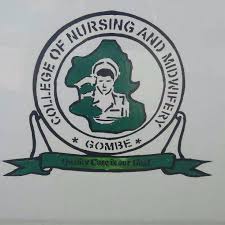Agric Keypoints: General terminology in animal production; Animal production involves a plethora of terms that describe various aspects of raising and managing animals for agricultural purposes. This article provides an overview of some common terms used in animal husbandry, shedding light on their meanings and applications.
Study other Agric keypoints here for JAMB, WAEC, IJMB
Agric Keypoints: General terminology in animal production
Common Terms in Animal Husbandry:
- Calving: The process of giving birth to a calf, typically referring to cattle.
- Kidding: The act of giving birth to kids, which are young goats.
- Castrate: To surgically remove the testicles of male animals, rendering them sterile and altering their behavior.
- Capon: A male chicken that has been castrated before reaching sexual maturity, resulting in meat that is tender and flavorful.
- Veal: The meat of young calves, usually under three months old, with a pale color and delicate flavor.
- Mutton: The meat of mature sheep, known for its rich flavor and often used in various cuisines.
- Lamb: The meat of young sheep, less than one-year-old, with a mild flavor and tender texture.
- Weaning: The process of gradually transitioning young animals from a diet of mother’s milk to solid food, often involving separation from the mother.
- Stallion: A male horse that is kept for breeding purposes.
- Estrus: The period of sexual receptivity in female animals, often referred to as “heat” in common parlance.
- Hatchery: A facility where eggs are artificially incubated to hatch into chicks, ducklings, or other young birds.
- Gestation: The period of pregnancy in mammals, from conception to birth.
- Broiler: A chicken raised for meat production, usually with rapid growth rates and high meat yield.
- Layer: A chicken specifically bred for egg production, with a focus on egg-laying capabilities.
- Grazing: Allowing animals to feed on natural vegetation in a pasture or range.
- Ruminant: Animals, like cattle and sheep, that have a specialized stomach compartment for digesting plant materials through fermentation.
- Herd: A group of cattle, sheep, or other animals kept together and managed as a unit.
- Hatchling: A newly hatched bird or reptile, often requiring special care and attention.
- Farrowing: The process of giving birth to piglets, commonly used in reference to pigs.
- Breeding: The intentional mating of animals to produce offspring with desired traits.
Using Various Terms in Animal Husbandry:
- The farmer anticipated the calving season with excitement as several cows were about to give birth to their calves.
- The goat farmer was busy during kidding season, ensuring that the newborn kids were healthy and well cared for.
- The decision to castrate the bull calves was made to prevent aggressive behavior and unwanted breeding.
- The gourmet restaurant featured a special dish made from capon meat, known for its tenderness and unique flavor.
- The market was offering a selection of veal cuts, attracting consumers who preferred the delicate taste of young calf meat.
- The traditional feast featured a hearty mutton stew, showcasing the robust flavor of mature sheep meat.
- The shepherd was proud of his lambs, which were raised on a nutritious diet and had tender meat.
- Weaning piglets from their mother’s milk was a gradual process, involving the introduction of solid food and separate pens.
- The rancher selected a promising stallion for breeding purposes, considering its lineage and physical attributes.
- The dairy farmer closely monitored the estrus cycles of his cows to determine optimal breeding times.
- The hatchery successfully incubated thousands of eggs, resulting in healthy chicks ready for poultry farming.
- The veterinarian provided care and guidance throughout the gestation period, ensuring the health of the pregnant cattle.
- The broiler chickens grew rapidly, reaching market weight in a short span due to their genetics and feeding regimen.
- The layer hens consistently produced high-quality eggs, a testament to their specialized breeding for egg production.
- The cattle thrived on the lush pastures, benefiting from the natural grazing resources available.
- Ruminants like cattle have a unique digestive system that enables them to efficiently process fibrous plant materials.
- The herdsman skillfully managed a large herd of sheep, ensuring their well-being and proper grazing rotation.
- The wildlife sanctuary celebrated the hatching of several rare bird hatchlings, marking a significant conservation milestone.
- During the farrowing process, the sow gave birth to a litter of piglets, each requiring care and attention.
- The breeder focused on selecting compatible pairs for breeding, aiming to produce offspring with desired traits.
Conclusion:
Navigating the terminology of animal production is essential for effective communication and understanding in the field of animal husbandry. Whether it’s discussing reproduction, breeding, or meat products, these terms play a crucial role in describing the various aspects of raising and managing animals for agricultural purposes.






